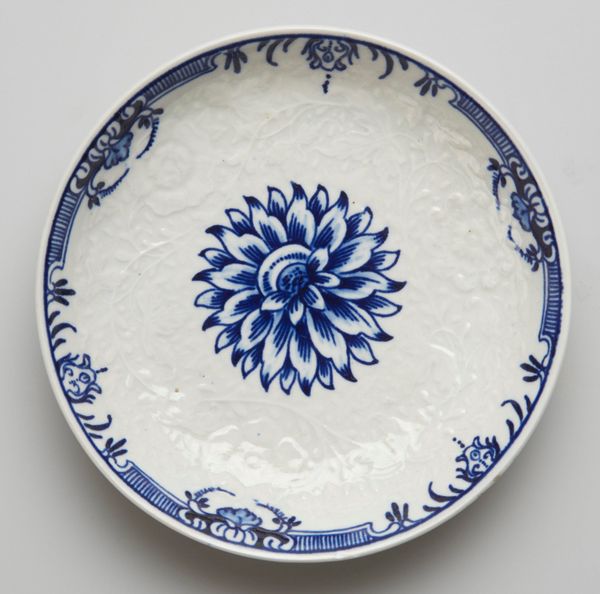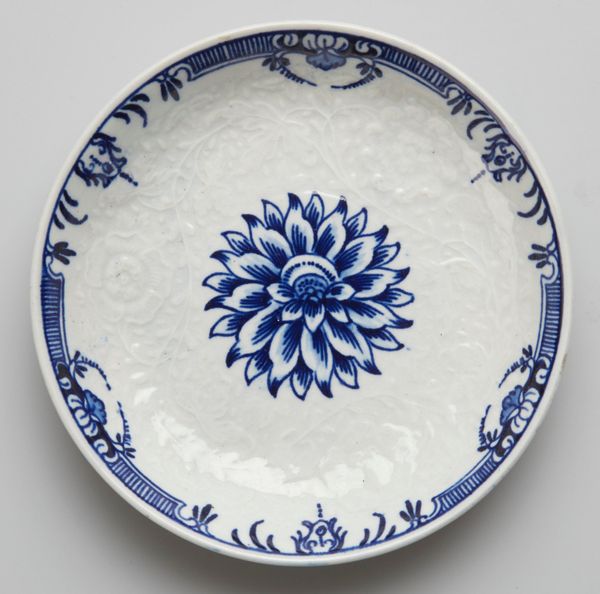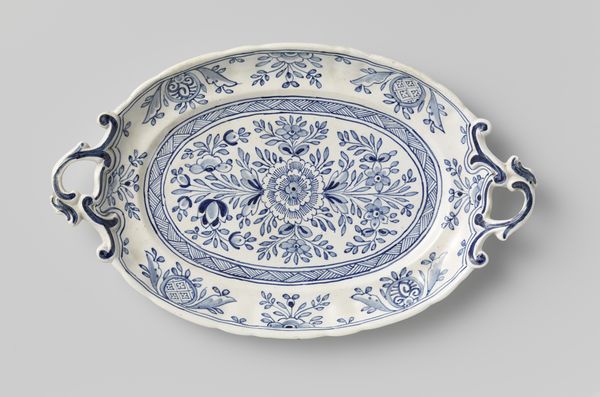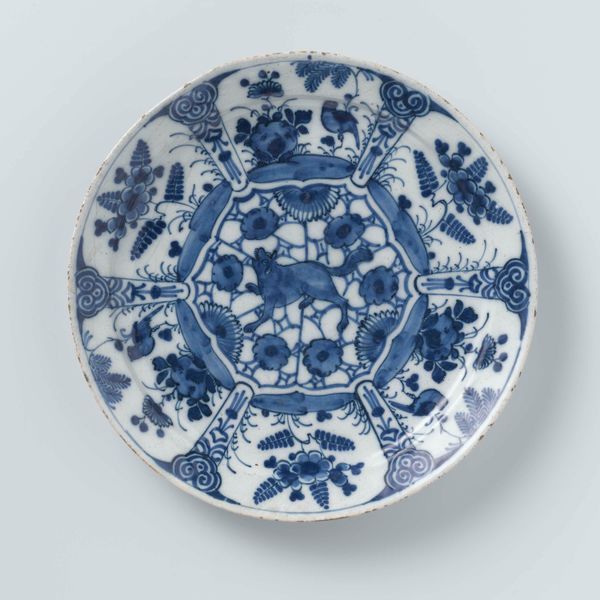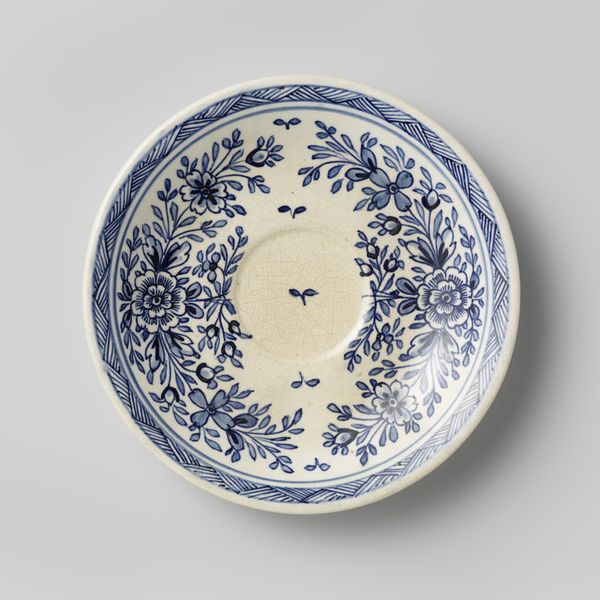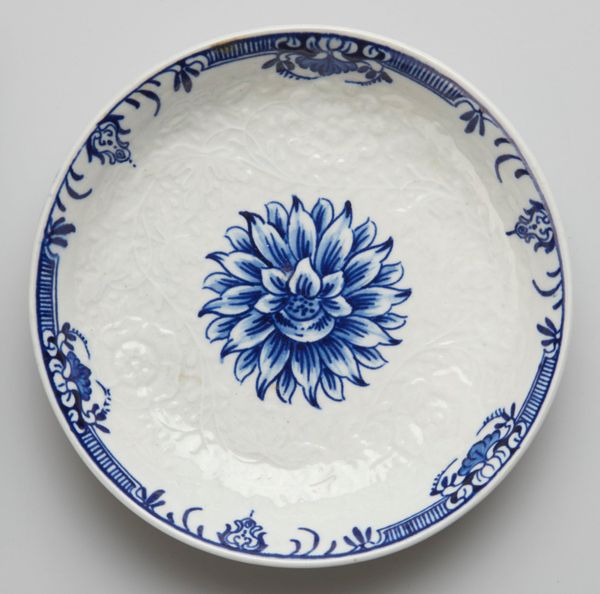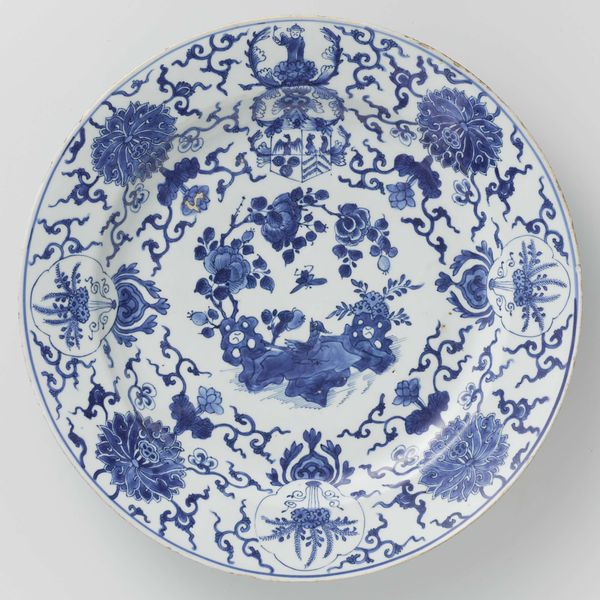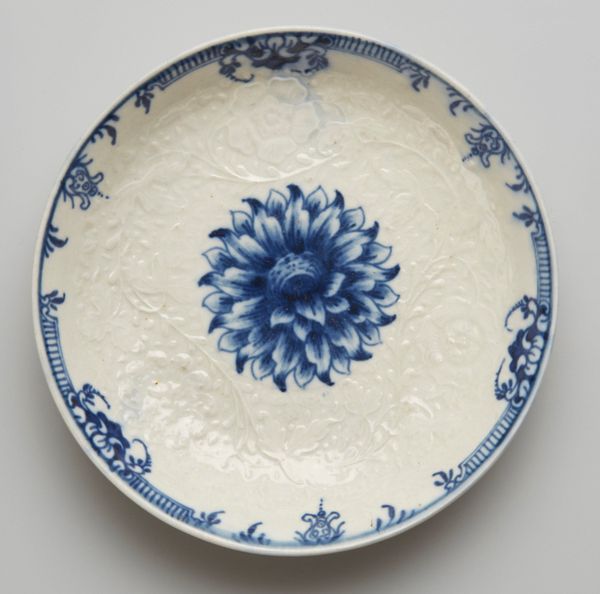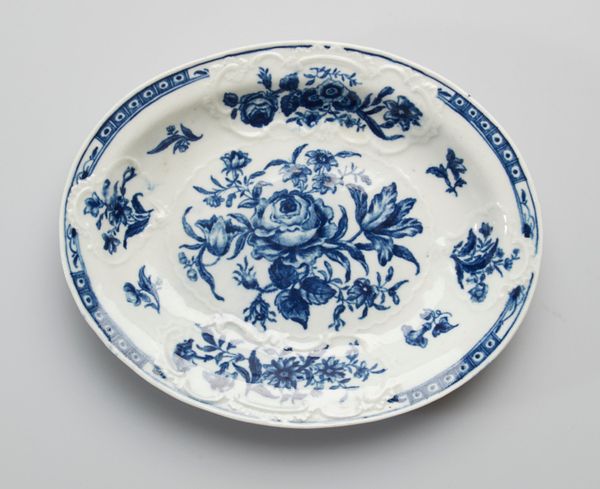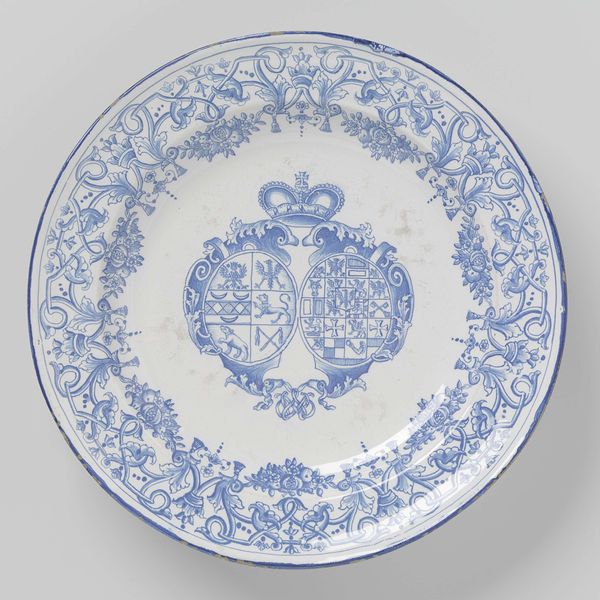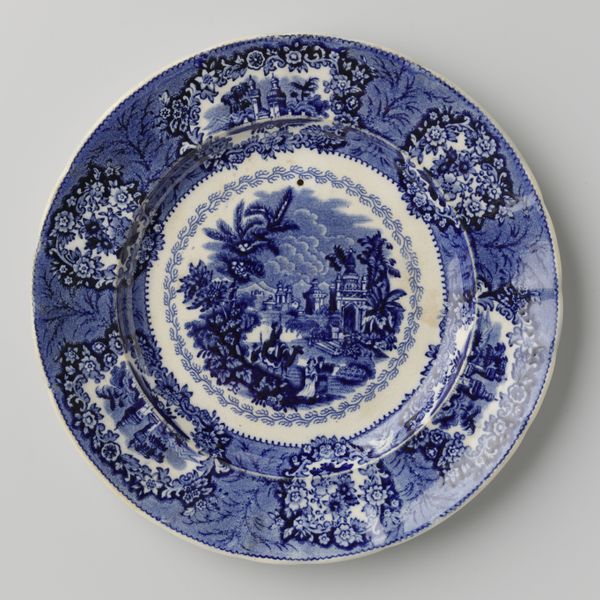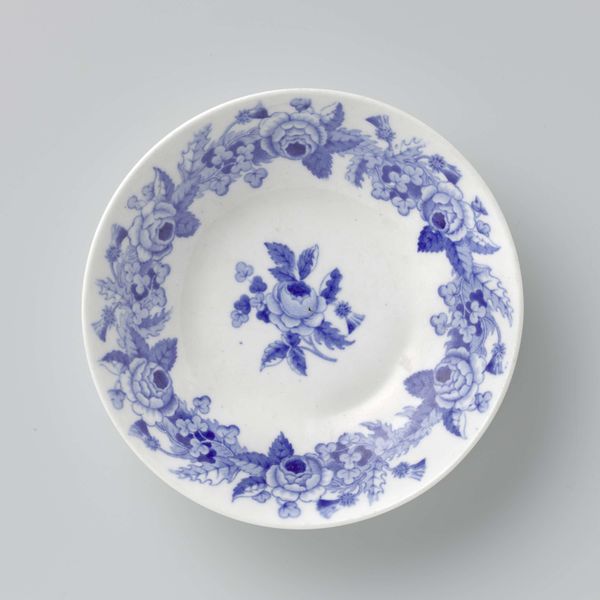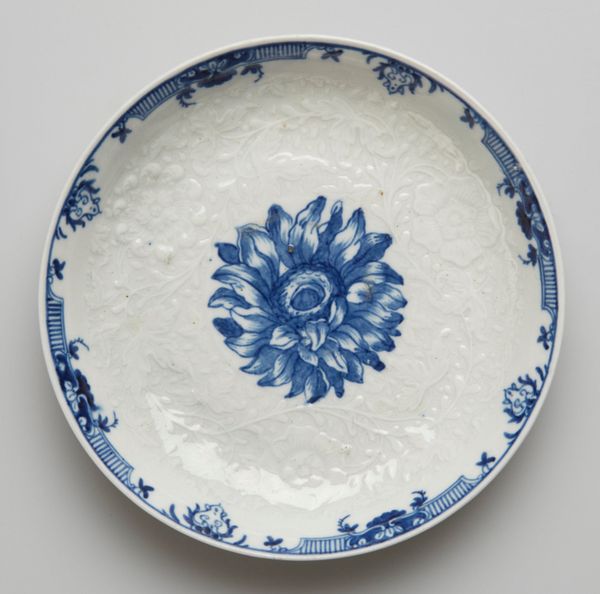
ceramic
#
product photograph merchandise
#
product studio photography
#
circular oval feature
#
decorative element
#
dutch-golden-age
#
product promotion photography
#
cake food
#
product fashion photography
#
ceramic
#
round design
#
retro 'vintage design
#
ceramic
#
decorative-art
Dimensions: height 2.7 cm, diameter 21.2 cm
Copyright: Rijks Museum: Open Domain
Editor: Here we have an elegant, ceramic plate titled "Bord, beschilderd met bloemen" or "Plate, painted with flowers," circa 1880. The maker is De Porceleijne Fles, and it lives at the Rijksmuseum. It’s painted with very delicate, cobalt blue floral designs. It strikes me as both ornamental and practical, a sign of its time. What do you see in it? Curator: I see a complex interplay of tradition, global trade, and cultural appropriation. These Delftware pieces weren't just decorative; they were statements about class and access. The blue-and-white aesthetic directly references Chinese porcelain, highly coveted in Europe at the time. Do you think the replication flattens the artistry? Editor: I guess that makes sense. I hadn't really considered the cross-cultural aspect before, just the aesthetics of the design. Though the original designs from China feel very different, culturally and visually. It looks derivative by comparison, perhaps? Curator: Precisely! The 'decorative art' label hints at its perceived lesser status compared to ‘fine art’ and its presumed associations with domesticity and femininity. How does viewing it through this lens alter your understanding of its value? Do the labor practices matter? The artist is never credited. Editor: That definitely adds another layer to it! The lack of attribution and the potential for exploitation... it makes you wonder about the lives and labor of the people creating these pieces, especially given that this particular object is sitting in a museum! Curator: Exactly. By considering its historical context, particularly in terms of gendered labor, colonial trade, and artistic hierarchy, we can read this plate as an artifact loaded with social and political meaning. What can Delftware mean for marginalized communities whose art has been co-opted? Editor: I think that the value of art becomes more poignant when the hands, faces, and origins become acknowledged. It is impossible to deny a human’s voice in the narrative, especially when they were never intended to be part of it. Curator: Absolutely! Understanding the complex narratives embedded within seemingly simple objects opens up a whole new way of seeing art.
Comments
No comments
Be the first to comment and join the conversation on the ultimate creative platform.
